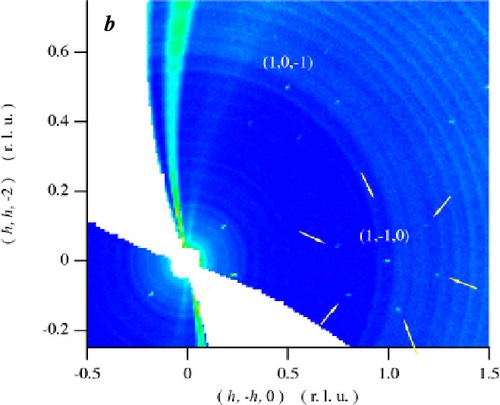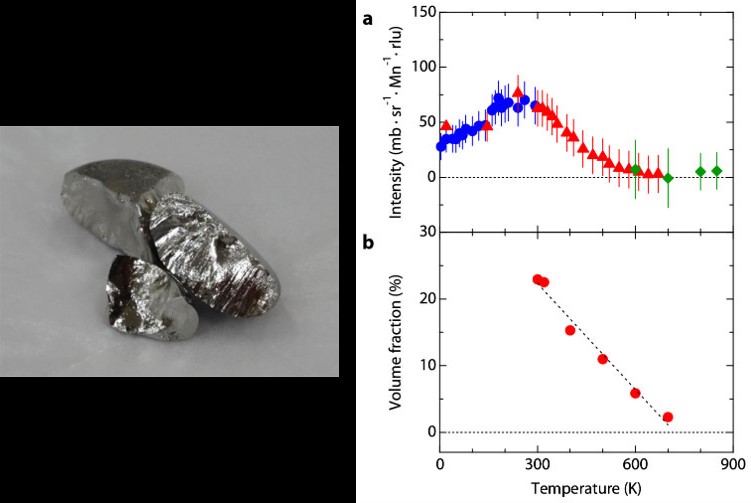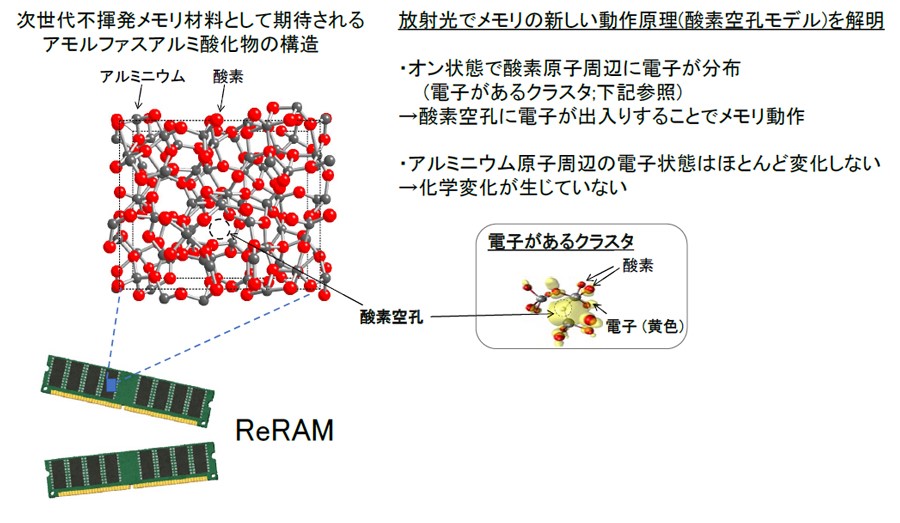Research Themes
- Research on strongly correlated electron systems by complementary use of neutron and synchrotron radiation X-ray
- Development of techniques for evaluating various functional materials by using neutron scattering
- Research and development on advanced utilization techniques using polarized neutron scattering
- Maintenance and management of neutron spectrometers and diffractometers installed in JRR-3
- User support for general user experiments conducted at JRR-3
- Maintenance and operation of sample environment equipment at JRR-3

Group Leader
PhD. KODAMA Katsuaki
Research Subjects
We use neutrons and synchrotron X-rays to investigate microscopic properties of functional materials, focusing on strongly correlated electron systems. For this purpose, we operate the following neutron spectrometers and diffractometers: triple-axis polarized neutron spectrometer TAS-1 (G2), high resolution neutron powder diffractometer HRPD (1G), triple-axis thermal neutron spectrometer TAS-2 (T2-4), triple-axis cold neutron spectrometer LTAS (C2-1), multi-purpose thermal neutron diffractometer MUSASI (T2-3-1, T1-4-6). The former two and the latter four instruments are installed in the reactor hall and the beam hall of JRR-3, respectively.
We also support general user experiments on these instruments and actively work on upgrading various neutron utilization techniques typified by polarized neutron scattering. In cooperation with the J-PARC Center, we also make a complementary use chopper spectrometer (4 SEASONS (BL01), AMATERAS (BL14)), a polarized neutron reflectometer SHARAKU (BL17) and a single-crystal diffractometer SENJU (BL18) installed at the Materials and Life Science Facility (MLF) of J-PARC.
Group Members
| Name | Position | Instruments | Research Areas | |
|---|---|---|---|---|
| KODAMA Katsuaki | Group Leader | JRR-3 HRPD | Magnetism, Strongly correlated electron systems, Neutron diffraction, Neuclear magnetic resonance | |
| KANEKO Koji | Maneger | JRR-3 TAS-1, LTAS | Magnetism, Strongly correlated electron systems, Material sciences, Neutron scattering, X-ray scattering | |
| METOKI Naoto | Adviser | JRR-3 MUSASI | Condensed matter physics, Neutron scattering | |
| MORIAI Atsushi | Principal Engineer | JRR-3 SUIREN | ||
| YAMAMOTO Kazuyoshi | Principal Engineer | |||
| IGAWA Naoki | Scientist | JRR-3 HRPD | Material Science and Neutron diffraction | |
| SHIMOJO Yutaka | Assistant Principal Engineer | |||
| NAGAHORI Kazuhisa | Assistant Principal Engineer | |||
| KUBOTA Masato | Assistant Principal Researcher | JRR-3 TAS-2 | Condensed matter physics, Material sciences, Neutron scattering, Resonant X-ray scattering | |
| YAMAUCHI Hiroki | Assistant Principal Researcher | JRR-3 LTAS, MUSASI | Strongly correlated electron systems, Neutron scattering, High-pressure physics | |
| HAGIHALA Masato | Scientist | JRR-3 TAS-2 | Magnetism, Strongly correlated electron systems, Magnetic structure analysis | |
| TABATA Chihiro | Assistant Principal Researcher | JRR-3 TAS-1 | Strongly-correlated electron systems, Neutron/X-ray diffraction | |
| SASAKI Miki | Engineer | |||
| NABATAME Nozomi | Engineer | |||
| OZAWA Jun | ||||
| HAGA Nana | Post-Doctoral Fellow | Solid electrolyte | ||
| HIROSE Yusuke | Scientist | JRR-3 TAS-1 | Strongly correlated electron systems, Neutron scattering, Single crystal growth | |
Publications
Click here for a list of publicationsRecent Research Topics
Formation of skirmion lattice in 4f-electron system EuPtSi― JPSJ 2020 Highly Cited Article ―
Research paper on a magnetism of EuPtSi by Dr. Kaneko as a Principal Researcher of the Strongly Correlated Materials Research Group was selected the JPSJ 2020 Highly Cited Articles. This research is the first observation of magnetic skirmion lattice formed in f-electron systems, suggesting that rare earth compounds are also promising platforms of magnetic skirmions.
More Detail are shown here. https://journals.jps.jp/page/jpsj/mc1y_2020
Unusual short-range of conduction-electron spins discovered at a record temperature-A new metallic state in the new material Mn3RhSi-
In some metallic magnetic materials, an unusual short-range order of conduction-electron spins has
been observed at low temperatures as a property not seen in ordinary metals, where a partially ordered
state emerges in the paramagnetic phase with phase separation. However, its origin is not well
understood.
We predicted that one of its origins was the spatial inversion symmetry breaking.
To verify this prediction, we have thus synthesized Mn3RhSi, a new metal magnet without
spatial inversion symmetry, for the first time in the world. As a result of complementary neutron and
muon spin relaxation experiments, we discovered a "partial short-range order of conduction-electron
spins" that is phase-separated from the paramagnetic phase at a record temperature of 720 K (447℃) in
Mn3RhSi.
This temperature is much higher than TN = 190 K. Our discovery is expected to lead to
further understanding of the partial order of conduction-electron spins, the origin of which has not
been clarified.
Toward Next-Generation Memory with Low Power Consumption~Observation of Electronic Structure of Alumina Film for Nonvolatile Memory~
We measured X-ray absorption spectra of amorphous alumina with vacancy-type oxygen defects (AlOx) which exhibits the resistance random access memory (ReRAM) effect. We were able to detect changes in the electronic structure owing to the ReRAM effect. A major difference in the spectra near the O K-absorption edge was observed between a low resistance state (LRS) and a high resistance state (HRS). The subpeak profile within the band gap appeared in the LRS, while it was suppressed in the HRS. By contrast, the spectra near the Al K-absorption edge in the LRS and HRS appeared almost identical, indicating that no byproducts are generated. These findings imply that the distribution of charged electrons primarily changes near oxygen sites from the HRS to the LRS.




